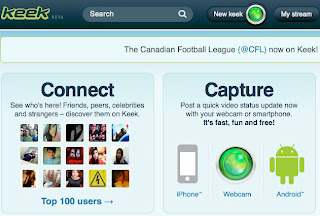The nude
in art has been a consistent theme throughout the history of fine art and has
remained a critical focal point of Western Art since the Renaissance or ‘the
rebirth’.
Be it
sacred art or the art of portraiture, the unclothed human figure has always
captivated mankind and has been one of the lasting subjects of interest in art.
It is a
daunting task sometimes to lead a tour in a gallery or museum and help visitors
intelligently understand and appreciate art. However, nudity can be
discussed in terms of the reasons artists choose to portray the human body
without clothing.
To begin
with, the human body is beautiful and that makes it a perfect subject of art.
It contains variations of all geometric shapes such as the cone and cylinder
making it the best focus in exploring art concepts and forms.
The
human body is also extremely communicative and therefore can be used to explain
a variety of emotions which the viewer can understand.
Because of people’s
familiarity with the nude form, artists can use this form to symbolize and
express human values and norms for example a nursing mother or a pregnant
woman.
The
human form is part of the commonality that binds humanity together and is
familiar to all people regardless of upbringing, education, gender, customs or
ancestral identity.
Morden
attitudes to nude art are varied, not only in style but also in the meanings
that the art attempts to express.
In ancient Greece, though mythological
stories tell of powerful women, the nude male figure was the focus of art for
many years.
Society
was based around men since women were subservient and primarily home-bound. The
Greek were the first people to determine how to practically depict and still
‘perfect’ the human body in art, giving it skilfully balanced organs, a
well-shaped physic and perfect outlines.
The
Greek society accepted nudity because their athletes practiced and competed in
the nude to show their perfect natural form.
Even though some cultures saw
nudity as being equated to submissiveness, disgrace and downfall, the Greek
took this image and glorified it; the male nude became the center of splendour
and approval.
Even in
Africa today, artists are incorporating nudity in their art. In Zimbabwe, there
are a few nude pieces made by artists including Rebirth by Misheck Masamvu
which depicts a female figure whose upper torso is exposed whilst the head and
lower trunk are covered.
Closer
home in South Africa, there are a couple of artists who do nude art. Largely,
the nudes they do are a female from, expressing the life and sensuality of
women.
South
Africa’s Amanda Adams seems to be fascinated by the female rear end as in two
of her oil paintings, Second Skin and Sunbather; she depicts a woman’s exposed
derriere.
There
are also various South African paintings and sculptures of standing or sitting
nude characters including Waiting by Harriet Jameson Pellizzari, a watercolour
painting depicting a semi-nude woman saddened by her thoughts and impatience
whilst she waits for someone (presumably a man).
Karl
Lilje’s Le Luxe Du Temps (The Luxury of Time), is an interesting mixed media art piece with a nude
raven haired young woman sitting haughtily on what looks like a throne with
flowers at her feet.
The key
reason why people are fascinated with nude art may be found in the Old
Testament story of Adam and Eve where it is said that nudity was an inherent
element of the enjoyment of Paradise prior to the Fall.
The
portrayal of the nude in fine art then can be viewed as part of the redemptive
attempt of mankind to salvage his virtue and return to the presence of God and
take pleasure from the status of purity that Adam and Eve enjoyed in the Garden
of Eden.
The nude
in art reminds one that in being human, he is also an animal, imperfect and
separated from God. It reminds one that he is in a continuum, that his naked
body is somehow superior or inferior to that of the nude upon which he looks
and also somehow enhanced or poorer than the naked bodies of all those with
whom he shares the world.
It
reminds one that he criticizes his body because others are constantly comparing
it too and that in turn, he criticizes and compares the bodies of others.









